People
See the Poetic, Heartbreaking Final Paintings of 7 Famous Artists, From Salvador Dalí to Marcel Duchamp
In the third part of our series, we explore the final works by great artists.
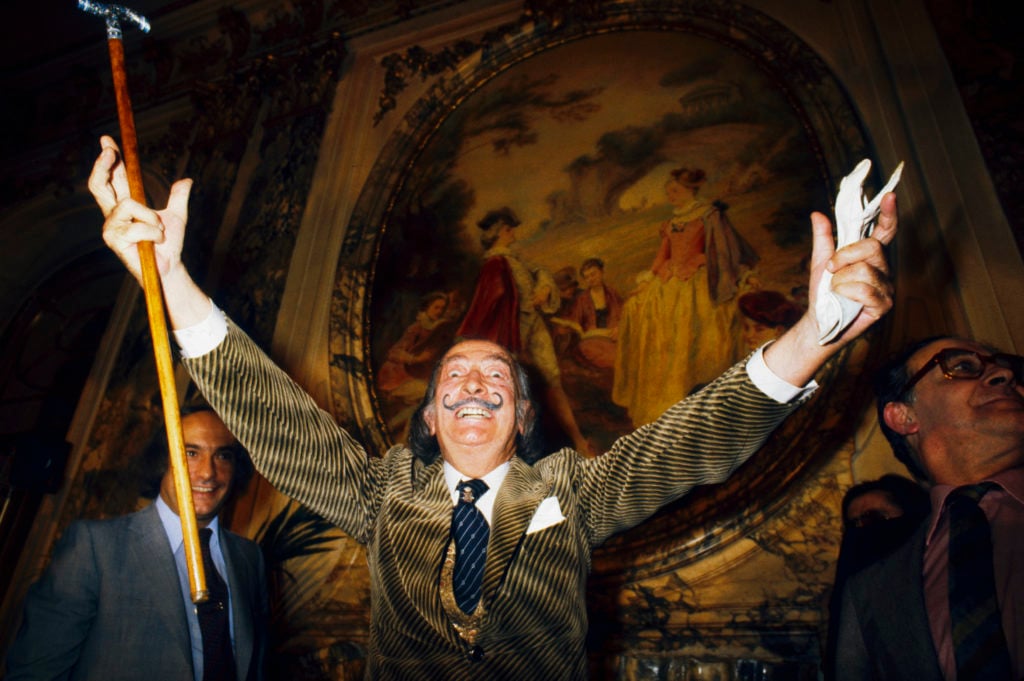
In the third part of our series, we explore the final works by great artists.

Caroline Goldstein

In another installment of our series investigating the final paintings of famous artists, the list takes a darker turn, with many of the artists aware that death was near. That knowledge manifested itself differently, from Stuart Davis’s poetic resignation to the revelation of Marcel Duchamp’s closely kept secret. Once again we used Bernard Chambaz’s book The Last Painting as a jumping off point while adding our own research and insight.
Below, see a selection of the works created by artists just before they shuffled off this mortal coil, arranged chronologically.

Paul Klee, Untitled (Captive, Figure of This World/the Next World) (ca. 1940). Courtesy of Google Arts & Culture.
The title of Paul Klee’s last painting is illustrative of the artist’s declining state of mind. As Chambez writes, he was gripped by a frenetic need to paint in his final years, including canvases with titles like Angel of Death, and Explosion of Fear. The work is more serene than others he created in his final years, with cool blue hues that signal tranquility, though the fractured facial features alluded in his geometric abstraction has invited analyses that he was suffering mental, as well as physical anguish.
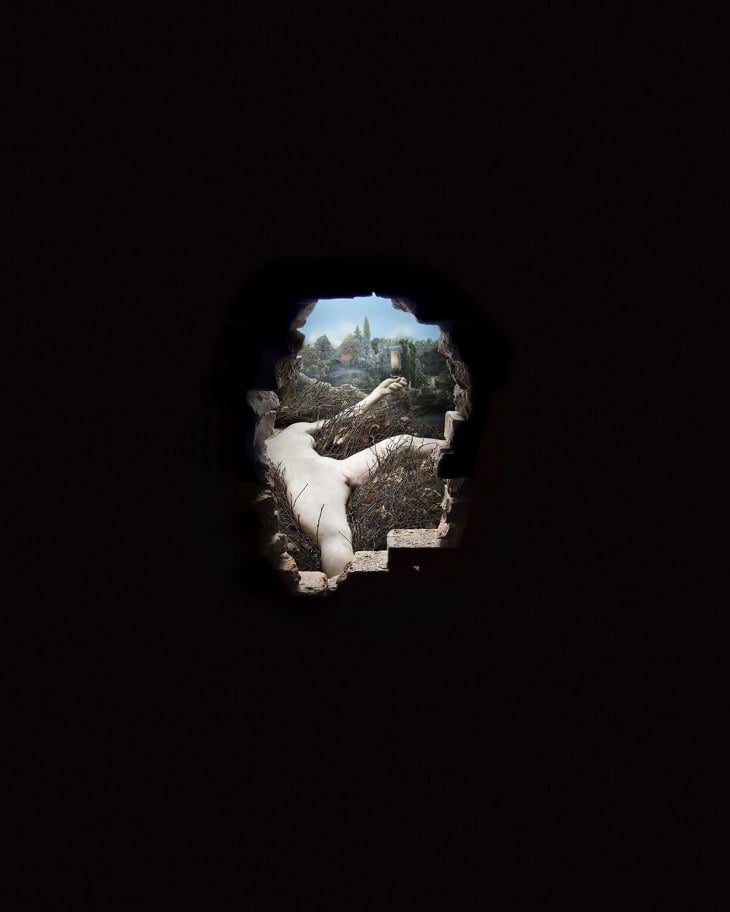
Marcel Duchamp, Étant donnés : 1. la chute d’eau 2. le gaz d’éclairage (Given: 1. The Waterfall, 2. The Illuminating Gas)(1946–66). Courtesy of the Philadelphia Museum of Art.
After publicly declaring that he was giving up art for a life of chess, Marcel Duchamp shocked the world when he revealed his magnum opus, in the works for nearly two decades. The intricate work was described by artist Jasper Johns as “the strangest work of art in any museum.” The installation is set in a dimly-lit room holding an ancient Spanish wooden door with two peepholes through which one sees an unsettling tableaux: A nude female mannequin, legs splayed, is laying on a pile of sticks and leaves, her left hand holding a gas-lamp aloft. Beyond the female form, one can see a hilly landscape that Duchamp achieved by retouching a photograph and positioning it behind her—a motorized waterfall situated in the corner has a light flickering on it, adding to the unease of the diorama.
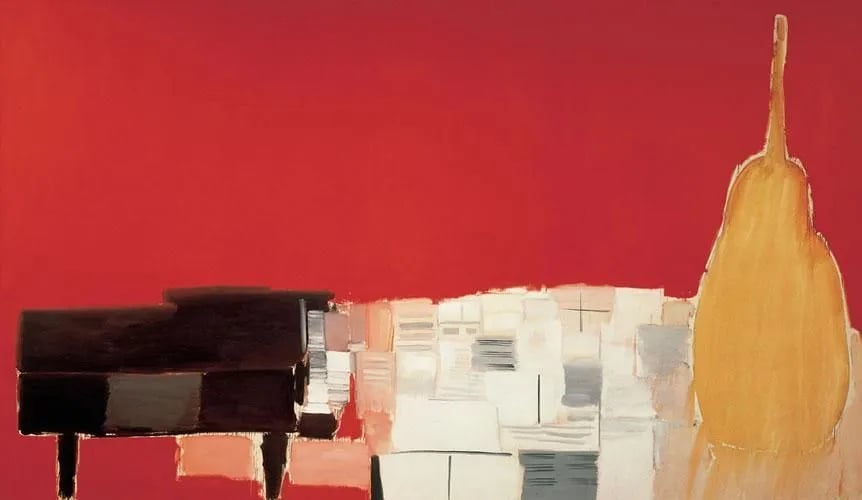
Nicolas de Staël Le, Concert (1955).
At the age of 41, the French painter Nicolas de Staël attended two concerts, back to back in Paris at the Theatre du Petit-Marigny, performed by the Domaine Musical. Afterward, he left the theater for his studio, where he began feverishly working on what would become his largest and final piece, measuring nearly 12-by-20 feet. The stark red background of the canvas is accentuated by the form of a cello and an abstracted piano sitting on the stage (the instruments that are usually left behind after a performance finishes). A letter that the artist wrote to dealer Jacques Dubourg on the last evening of his life said that he no longer had the strength to finish his paintings. The next night he threw himself off his studio terrace and fell to his death.
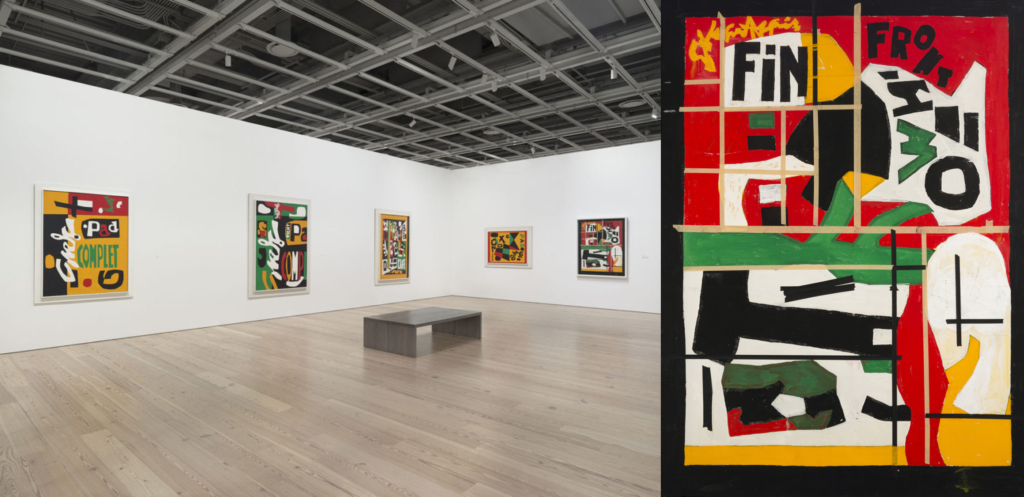
Installation view of Stuart Davis, Fin (1962-64) in “Stuart Davis: In Full Swing” at the Whitney Museum. Photograph by Ron Amstutz.
Just as Davis was at the peak of his career and earning widespread acclaim by artists like Donald Judd for his contribution to the burgeoning Pop movement, his own health was in a steady decline. The painter suffered from high blood pressure and heart problems for most of his life, and as he reached the age of 70 he grew increasingly ill. Starting in the late 1950s, he had limited his palette to mostly just red, yellow, and green, in addition to black and white, and was more likely to use small snippets of advertisements or typography, which he would magnify and fuse with his abstract geometry. This painting had been sitting on an easel in his living room for two years, and he slowly labored on it, but never finished. The canvas still has strips of masking tape affixed to it, which gives insight into Davis’s practice—on the evening of June 23, 1964, Davis had finished watching a French film on television that closed with the word fin, meaning “the end.” Davis got up and added the word Fin to his painting, went to bed, and died after suffering a stroke that evening, en route to the hospital.
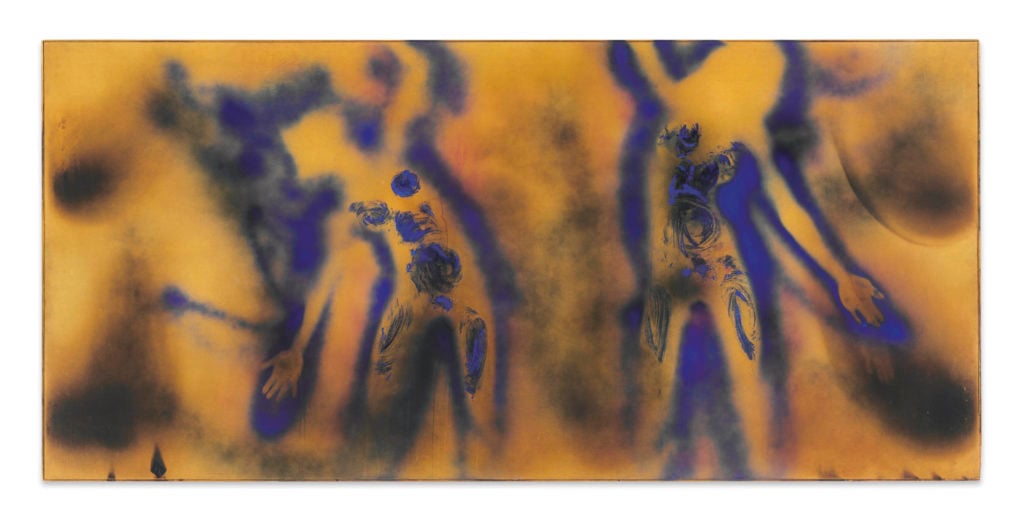
Yves Klein, FC1 (Fire Colour) (1962). Photo courtesy of Christie’s Images, Ltd.
Never one for subtlety, Yves Klein’s last painting was forged, literally, in fire, just weeks before he died at the age of 34. In a catalogue essay for Christie’s, where the painting netted $36 million at auction in 2012, Klein’s widow wrote about the tremendous effort it took for her late husband to complete the work. FC1 was part of Klein’s “fire paintings,” which involved dousing models in water and pressing them onto canvases, after which he would go at the panels with a flamethrower, singing the surfaces. Then, the models arranged their bodies onto the works again, creating ghostly shadows. The drama of the work’s creation was compounded by a series of heart attacks Klein suffered, one that was supposedly brought about by the negative reaction to a recent exhibition in New York, and the other occurring while he was at the Cannes Film Festival, humiliated as he watched an edited clip of his own working process mocked and exploited in the documentary Mondo Cane. He died two weeks later.
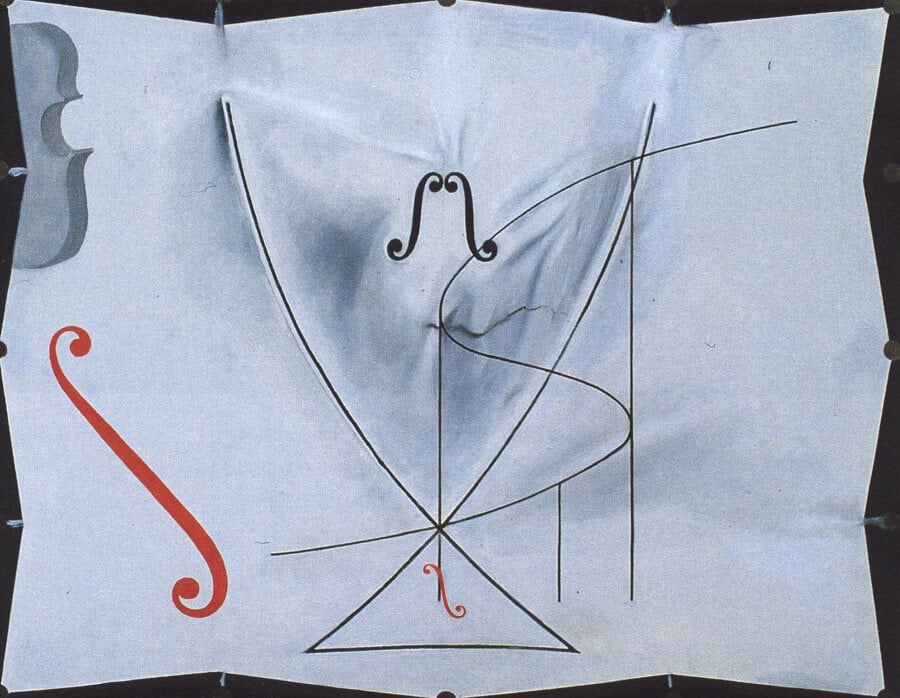
Salvador Dalí, Untitled. Swallow’s Tail and Cellos (Catastrophes Series), 1983.
During the last years of his life, Dalí became obsessed with the mathematical catastrophe theory developed by French mathematician René Thom, who suggested that there are seven “elementary catastrophes” that occur: fold, cusp, swallowtail, butterfly, hyperbolic umbilic, elliptic umbilic, and parabolic umbilic. This painting, with its generous curves and sharp edges, mimics these catastrophic events in black lines painted atop what appears to be a crinkled white sheet of paper. The organic curves of a cello appear to one side along with, perhaps as a reference to his own famous facial feature, a handlebar mustache, Bernard Chambez posits.
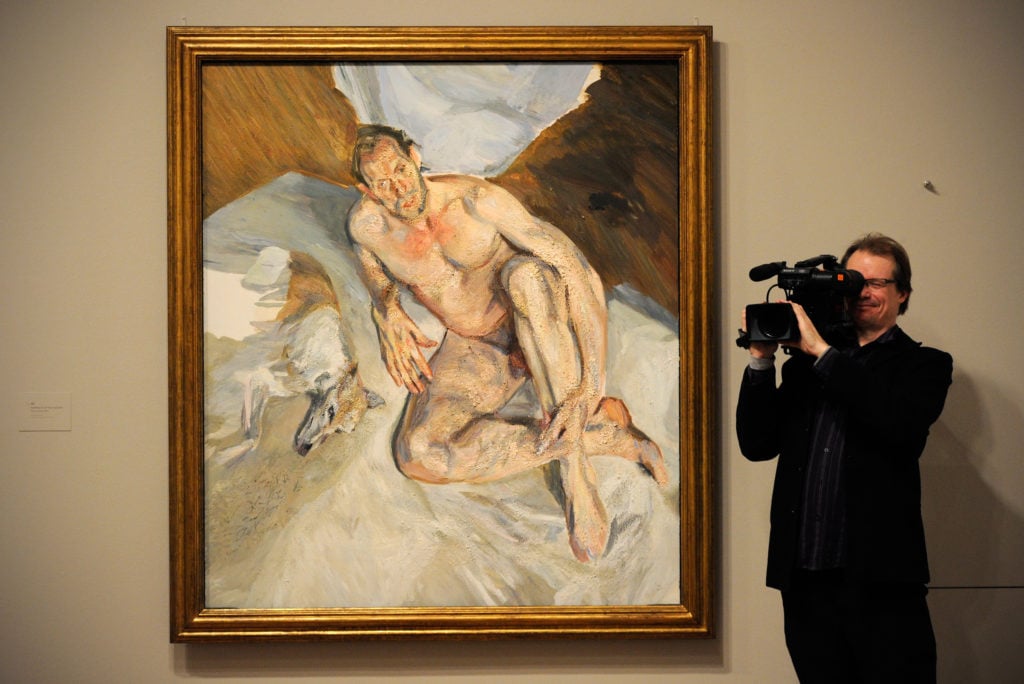
Freud’s unfinished painting Portrait of The Hound, 2011 at London’s National Portrait Gallery. Photo: CARL COURT/AFP via Getty Images.
When the National Portrait Gallery in London organized an expansive retrospective of Freud’s work in 2012, it was the first time the artist’s last canvas was on view to the public, framed, though unfinished at the time of his death, just a year prior. The work shows Freud’s longtime assistant and model David Dawson sitting cross-legged on a sheet, with his trusty whippet, Eli, laying on the bed next to him. Dawson looks directly into the viewer’s eyeline, though his dog is decidedly less engaged. The large canvas consumed Freud’s attention for the last four years of his life, and remained on his easel after his death.